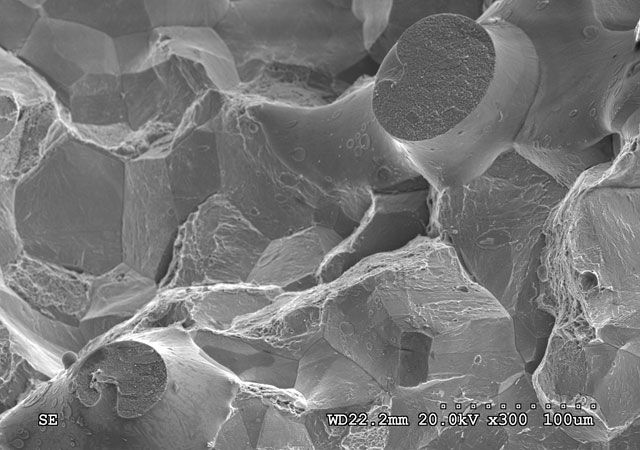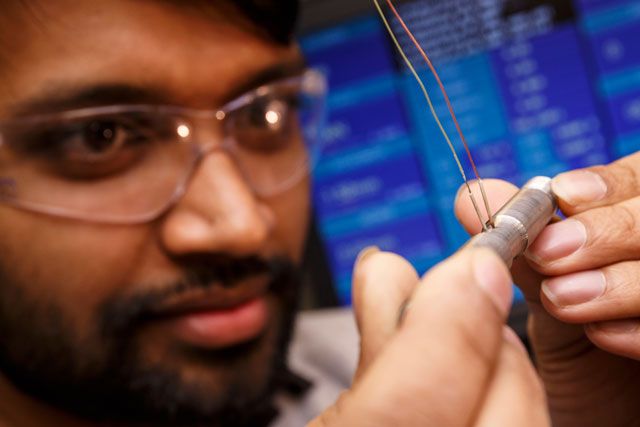Welding may be perceived as an established technology with little room for innovation, but its underlying principles are poised to guide the very future of manufacturing—from heavy-duty industrial components to children’s toys.
"Welding remains one of the most complicated and important fabrication processes used by industry,” says John DuPont, the R.D. Stout Professor of Materials Science and Engineeringand co-director of Lehigh’s recently established Manufacturing and Materials Joining Innovation Center, or Ma2JIC. “And it turns out when you look at the additive manufacturing processes used for metals and alloys, they are really welding processes in disguise.”
Additive manufacturing—technologies that build 3D objects by adding layer-upon-layer of material—has entered the popular imagination via the proliferation of desktop 3D printers, and its wider impact in manufacturing science has been dubbed a “third industrial revolution” by The Economist, among other sources.
In 2010, Ma2JIC began its efforts as Lehigh’s Center for Integrated Materials Joining Science for Energy Applications. This Center was part of an Industry and University Cooperative Research Center (I/UCRC) supported by the National Science Foundation (NSF), a consortium that now includes The Ohio State University, Colorado School of Mines and University of Tennessee at Knoxville, as well as 29 industry and government partners.
As industry increasingly turns to additive manufacturing to improve the bottom line and mitigate environmental impact, Ma2JIC has broadened its researchers’ focus to tackle projects in additive manufacturing of advanced metals such as new stainless steel and nickel alloys, across a broad swath of industry sectors.
When dissimilar materials are welded together traditionally, DuPont explains, the properties of the alloys change abruptly, leaving the joints prone to failure. “We have found that when you join these alloys, they don’t have the strength of the base metals,” he says. “Due to an effect known as micro-segregation, the alloying elements are not distributed uniformly in the area of the joint.”
This leaves industry with an expensive and difficult choice. For example, modern power plants seek greater efficiency by using less fuel and emitting less carbon, and thus engineers have designed plants that burn hotter and generate much higher steam pressures. Operators must undertake costly preventative maintenance programs to remove and replace joints before they fail, or endure downtime that can cost millions of dollars per day.
The Ma2JIC of collaboration
Power plant designer Babcock & Wilcox, welding equipment provider Lincoln Electric, Shell Oil, and Brazil’s Petrobras, along with the Electric Power Research Institute, are partnering with Ma2JIC to solve the problem of cracking in heat-treated welds. According to DuPont, one way to deal with the weakness caused by micro-segregation in welds is to heat-treat the joint after welding. Rapid heating and cooling experienced during welding does alter the material’s microstructure, and can cause defects; sometimes heat-treatment doesn’t effectively relieve the stress, and the joint cracks.
Engineers must find the right combination of exposure time and temperature to strengthen the weld—“it’s like baking a cake,” DuPont says. Because trial-and-error costs time and a lot of money, a previous project experimentally validated software models from another partner, Thermo-Calc Software, to help determine optimal recipes. Through experiment and simulation, Ma2JIC tests and compares alloys to identify the best combinations for a wide variety of industrial-strength applications.
“We worked with Ohio State researchers to develop a way to simulate the cracking process in the lab under controlled conditions,” DuPont says. “We can take an alloy that would be used in the field and put it through any thermal cycle we want, and stress it at the sametime,” using a specialized piece of equipment known as a Gleeble® simulator.
With colleagues from UT Knoxville and Oak Ridge National Laboratory, DuPont and his team are fabricating what they call graded transition joins. By carefully controlling and adjusting the material composition of the weld, this technique yields stronger and longer-lasting components by blending the properties of the base metals gradually over a controlled distance.
Ma2JIC represents the second five-year bloc of support from the NSF for Lehigh’s efforts within the I/UCRC. DuPont says that the broad I/UCRC collaboration is “a way to take our expertise and put it to work right away finding solutions for industry. It’s a big benefit to us, because we attract more industrial support in the long run. Our Master’s and Ph.D. students work on real-world research problems and get the chance to attend twice-annual meetings with center participants and members. And often they come away with job offers.”



